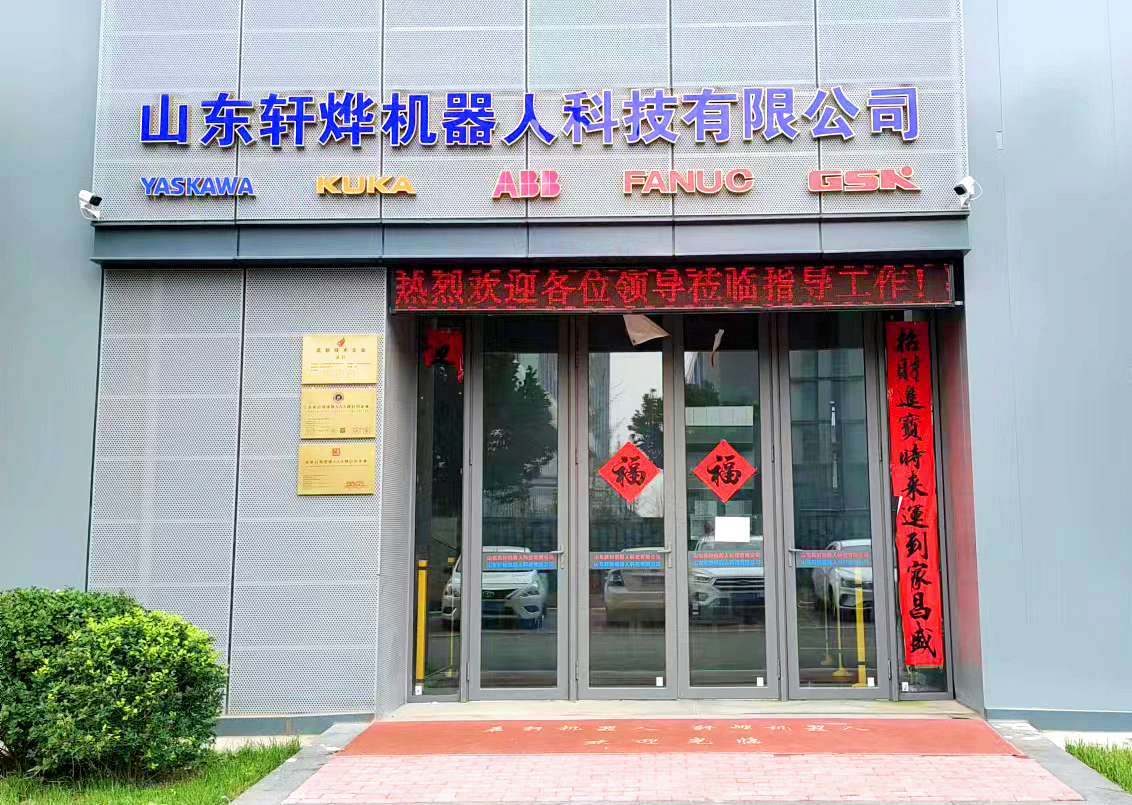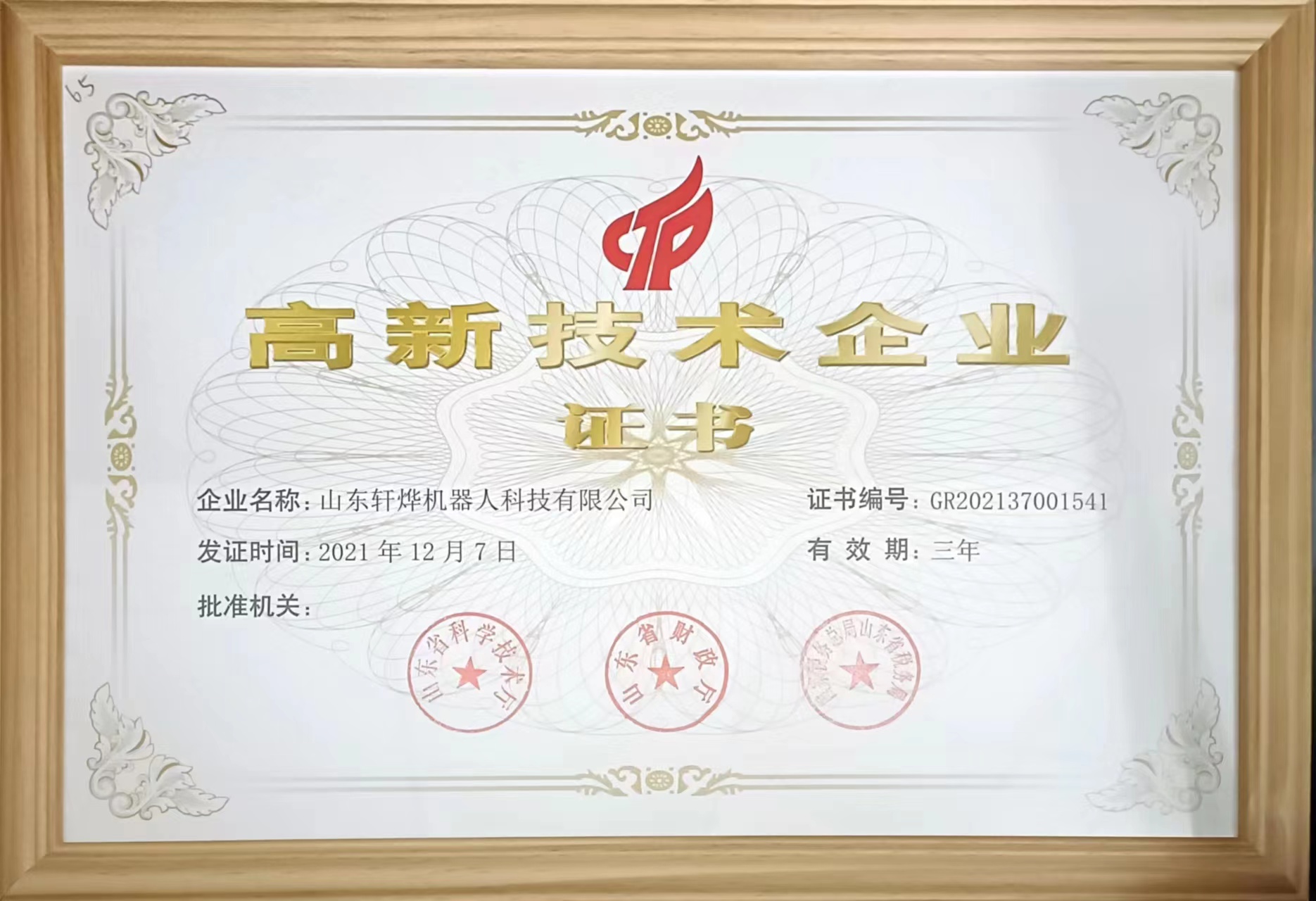
伟德app安卓版下载安装教程是一家以工業(ye) 機器人以及自動化非標設備於(yu) 一體(ti) 的技術企業(ye) ,公司致力於(yu) 焊接、切割、機器人機床上下料等領域的機器人智能化研究和產(chan) 業(ye) 化應用

公司立足於(yu) 高端裝備製造等戰略新興(xing) 產(chan) 業(ye) ,將追逐“製造2025"致力於(yu) 機器人技術和互聯網技術的深度融合,推動智造。
發布:2024-02-06 瀏覽:0
工業(ye) 機器人主要由主體(ti) 、驅動係統和控製係統三個(ge) 基本部分組成。
Industrial robots are mainly composed of three basic parts: the main body, driving system, and control system.
主體(ti) - 即機座和執行機構,包括臂部、腕部和手部,有的機器人還有行走機構。大多數工業(ye) 機器人有3-6個(ge) 運動自由度,其中腕部通常有1-3個(ge) 運動自由度。
The main body, namely the base and actuator, includes the arms, wrists, and hands, and some robots also have walking mechanisms. Most industrial robots have 3-6 degrees of freedom of motion, with the wrist typically having 1-3 degrees of freedom of motion.
驅動係統 - 包括動力裝置和傳(chuan) 動機構,核心為(wei) 減速器以及伺服電機,用以使執行機構產(chan) 生相應的動作。
Drive system - including power device and transmission mechanism, with a reducer and servo motor as the core, to generate corresponding actions for the actuator.
控製係統 - 是按照輸入的程序對驅動係統和執行機構發出指令信號,並進行控製。
Control system - It sends command signals to the driving system and executing mechanism according to the input program and controls them.
工業(ye) 機器人分類
Classification of industrial robots
關(guan) 於(yu) 工業(ye) 機器人的分類,國際上沒有指定統一的標準,可按負載重量、控製方式、自由度、結構、應用領域等劃分。
There is no unified international standard for the classification of industrial robots, which can be divided by load weight, control method, degree of freedom, structure, application field, etc.
按照結構形態分類如下。
Classified by structural form as follows.
按照應用分類如下。
Classified by application as follows.
工業(ye) 機器人產(chan) 業(ye) 鏈
Industrial robot industry chain
工業(ye) 機器人產(chan) 業(ye) 鏈主要是由機器人零部件生產(chan) 企業(ye) 、機器人本體(ti) 生產(chan) 企業(ye) 、代理商、係統集成商、終用戶構成。本體(ti) 是機器人產(chan) 業(ye) 鏈的核心,通常,本體(ti) 企業(ye) 設計本體(ti) 、編寫(xie) 軟件,采購通過代理商銷售給係統集成商,係統集成商直接麵向終端客戶。有的本體(ti) 企業(ye) 和代理商也會(hui) 兼做係統集成商。
The industrial robot industry chain is mainly composed of robot component production enterprises, robot body production enterprises, agents, system integrators, and end users. Ontology is the core of the robotics industry chain. Typically, ontology enterprises design ontologies, write software, purchase and sell them to system integrators through agents, who directly target end customers. Some ontology enterprises and agents also work as system integrators.
從(cong) 企業(ye) 來看,ABB、發那科、庫卡和安川電機這四家企業(ye) 是工業(ye) 機器人的四大家族,成為(wei) 世界主要的工業(ye) 機器人供貨商,占據世界約 50% 的市場份額。
From the perspective of enterprises, ABB, Fanuc, Kuka, and Yaskawa Electric are the four major families of industrial robots, becoming the world's major suppliers of industrial robots and occupying about 50% of the world's market share.

工業(ye) 機器人工作原理
Working Principles of Industrial Robots
機器人的工作原理是一個(ge) 比較複雜的問題。簡單地說,機器人的原理就是模仿人的各種肢體(ti) 動作、思維方式和控製決(jue) 策能力。從(cong) 控製的角度,機器人可以通過如下四種方式來達到這一目標。
The working principle of robots is a relatively complex problem. Simply put, the principle of robots is to mimic various human body movements, thinking patterns, and control decision-making abilities. From a control perspective, robots can achieve this goal in the following four ways.
“示教再現”方式:它通過“示教盒”或人“手把手”兩(liang) 種方式教機械手如何動作,控製器將示教過程記憶下來,然後機器人就按照記憶周而複始地重複示教動作,如噴塗機器人。
"Teaching and reproducing" method: It teaches the mechanical arm how to move through two methods: "teaching box" or "human hand handle". The controller remembers the teaching process, and then the robot repeats the teaching action in a cycle according to the memory, such as a spraying robot.
“可編程控製”方式:工作人員事先根據機器人的工作任務和運動軌跡編製控製程序,然後將控製程序輸入給機器人的控製器,起動控製程序,機器人就按照程序所規定的動作一步一步地去完成,如果任務變更,隻要修改或重新編寫(xie) 控製程序,非常靈活方便。大多數工業(ye) 機器人都是按照前兩(liang) 種方式工作的。
Programmable control method: The staff prepares a control program based on the robot's work task and motion trajectory in advance, and then inputs the control program to the robot's controller. Starting the control program, the robot completes the actions specified in the program step by step. If the task changes, it is very flexible and convenient to modify or rewrite the control program. Most industrial robots work in the first two ways.
“遙控”方式:由人用有線或無線遙控器控製機器人在人難以到達或危險的場所完成某項任務。如防暴排險機器人、軍(jun) 用機器人、在有核輻射和化學汙染環境工作的機器人等。
"Remote control" method: A person uses a wired or wireless remote control to control a robot to complete a task in a location that is difficult for people to reach or dangerous. Such as riot prevention and rescue robots, military robots, and robots working in environments with nuclear radiation and chemical pollution.
“自主控製”方式:是機器人控製中、複雜的控製方式,它要求機器人在複雜的非結構化環境中具有識別環境和自主決(jue) 策能力,也就是要具有人的某些智能行為(wei) 。
Autonomous control method: It is the most advanced and complex control method in robot control, which requires robots to have the ability to recognize the environment and make autonomous decisions in complex and unstructured environments, that is, to have certain intelligent behaviors of humans.
以六軸垂直多關(guan) 節機器人為(wei) 例(如下圖),通過機器人控製器及其控製係統,可實現S軸回旋,L軸下臂傾(qing) 動,U軸上臂傾(qing) 動,R軸手臂橫擺,B軸手腕俯仰以及T軸的手腕回旋,實現六個(ge) 軸的動作操作與(yu) 配合。
Taking a six axis vertical multi joint robot as an example (as shown in the figure below), the robot controller and its control system can achieve S-axis rotation, L-axis lower arm tilt, U-axis upper arm tilt, R-axis arm lateral swing, B-axis wrist pitch, and T-axis wrist rotation, achieving the operation and coordination of six axes.
以上的文章由伟德app安卓版下载安装教程工業(ye) 機器人提供分享,更多內(nei) 容請關(guan) 注我們(men) :https://www.wobeier.com.
The above article is shared by Shandong Xuanye Robot Technology Co., Ltd. Industrial Robotics. For more content, please follow us: https://www.wobeier.com.
產(chan) 品分類
新聞

截屏,微信識別二維碼